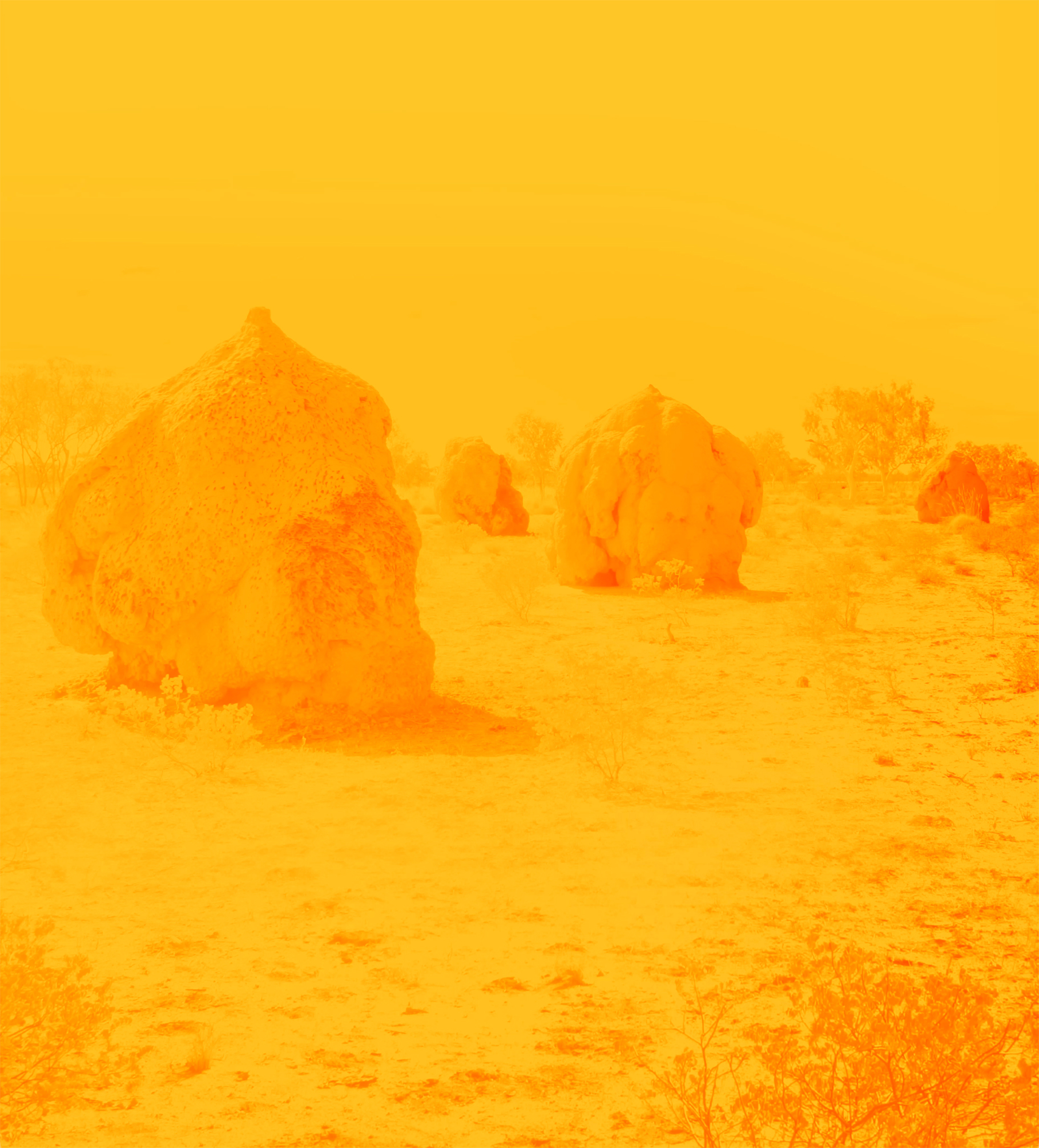


The Source, 2023, Two-channel 8k colour video, 9:16, with sound, 11 minutes 1 second
The artist would like to acknowledge and sincerely thank Bonya Arrernte Elder, David Blue; Central Land Council; Drew Anderson, Aboriginal Areas Protection Authority; Dr. Graham Brown, Entomologist, The Museum and Art Gallery of the Northern Territory and Jeff Iversen, Arram-Welke Aboriginal Corporation, Bonya.
Across time and place—at the critical events of human life—people have gathered at consecrated sites to bear witness, gain insight, and enact ritual. Known by many names, these sites often have a physical centrepoint or artifact that grounds the gathering, but the practices at these places often transcend rational experiences and occurrences—from the introspective, practical, to the bacchanal. Termite mounds are a profoundly ancient example of such a site, and they appear in many cosmogonies across the world.
The Source is filmed near Orrtipa Thurra (Bonya) on Eastern Arrente Country, Australia, and documents the more-than-human scale and colonies of cathedral termite mounds, which stand as physical markers of time and place-making. (Some examples reach up to 5 metres high.) Found in extreme arid temperatures of up to 40°C, the mound sustains the life of the termite colony by self-regulating its internal environment through a complex ventilation system. The termites physically draw moisture and organic material from the ancient artesian basin, site of a former inland sea (circa 144 million years BCE), which is now the contested site for large-scale gas fracking in remote Australia. The source of water that feeds these mounds, with roots at unknown depths in subterranean basins, are important receptors for wider ecosystem wellbeing.
The film is evocative of the shimmering heat waves and oceanic expanses of orangey-red sand of the central desert and cobalt sky. Filmed at both a micro and macro scale the true colour of the desert has a hallucinogenic intensity, giving the lung-like cathedral mounds an incandescent and optical quality. Some communities in the Central Desert region depict the Pamapardu Jukurrpa—the Flying Ant—as part of their Dreaming. Pamapardu is the Warlpiri name for the flying ants or termites.
As always, cosmogony isn’t revealed to everyone, and remains concealed for community reasons and lore. However, the physical monument of the primordial mound signals both a symbol and a gathering place for the more-than-human, a vital lifeworld that everything emanates from.
Film credits
Cinematographer and Editor: Clemens Habicht, Mel O’Callaghan
Production: Clemens Habicht, Mel O’Callaghan, Peta Rake
Post-production: Clemens Habicht